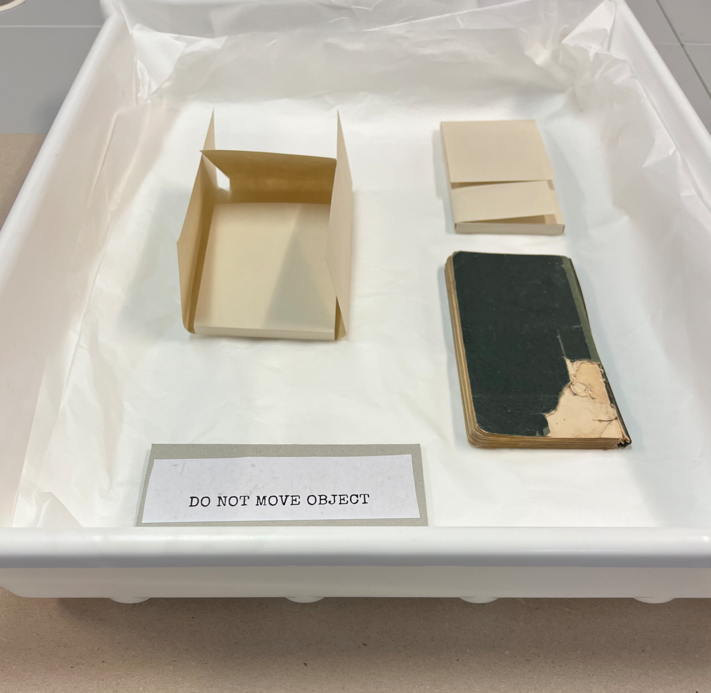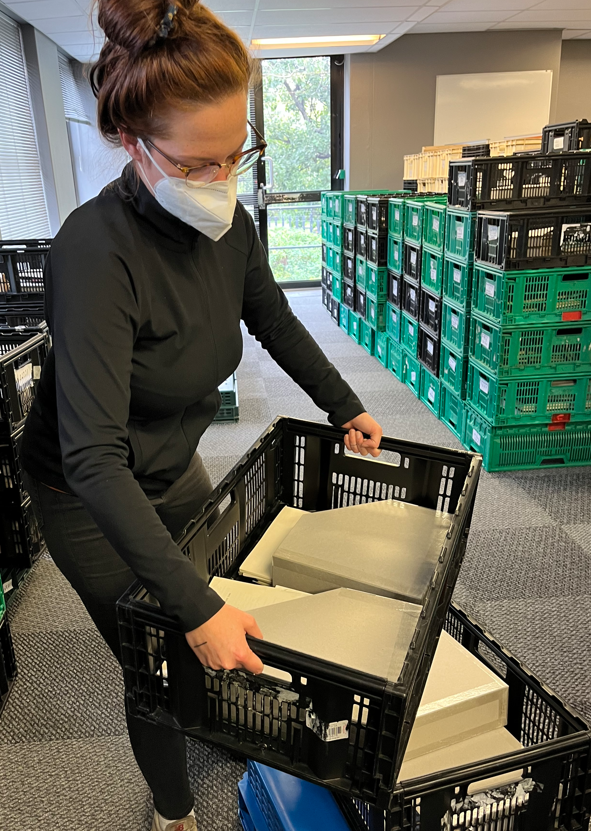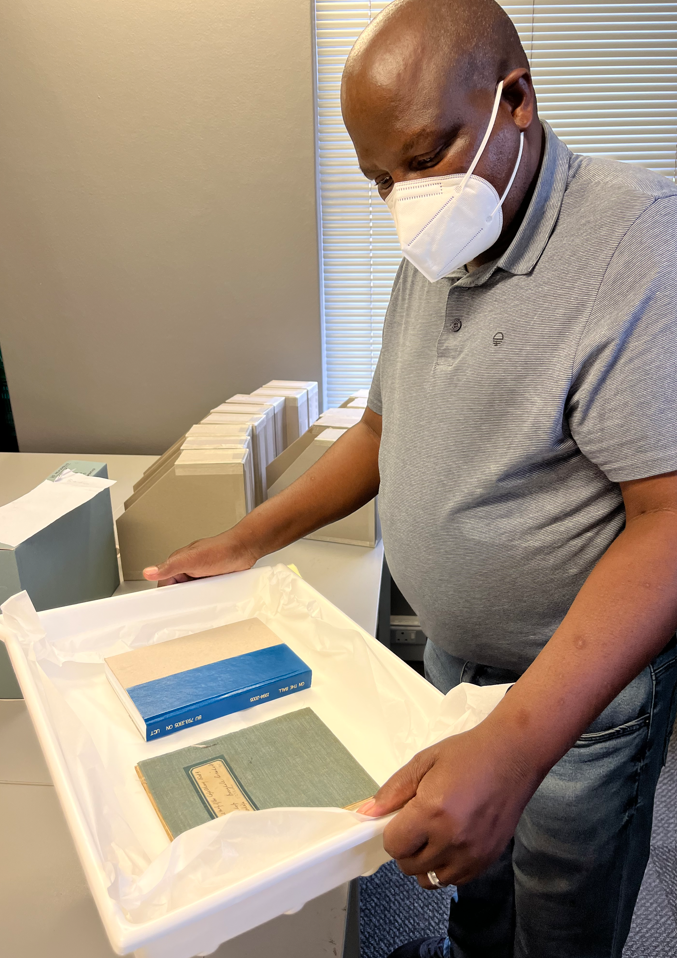by Daniéle Knoetze and Nancy Child
Within an archive, library or museum, handling is a major consideration. Poor handling is a cause of damage and as such professional handling is almost an artform in itself in these institutions.
The ever present ‘don’t touch’ signs are there because of the inherent dangers that happen when objects are mishandled. Like the De Koons Dog sculpture recently destroyed in Miami by mistake.
In conservation there are a set of guidelines to aid practitioners with handling that are easy to extend to your own treasures.
They are common sense but need to be applied diligently especially to paper objects because they are fragile and need more support than we suppose.

The rules for Safe Handling:
Prepare the place where you plan to move the object Before you pick it up to move it there. Seemingly a simple point but very important.
When you pick up the object, ensure that it is fully supported across its entire surface.
This is often attained by creating or using a support. By using a support you also prevent unnecessary touching of the object. A support can either be an oversized piece of cardboard, a crate, an oversized folder, or a trolley.

Paper objects that are either very fragile or very rare often have a purpose-built housing. The housing acts in two ways; to support and prevent handling during movement, and to prevent environmental damage though fluctuations.

Two hands are always used to pick up and carry an object to its next resting place. If that place is some distance, though a door, or in another part of the building; a helper is required. The helper will guide you, open doors, and generally assist the move while you concentrate of holding the object in a safe and steady manner. This is also the case even if you are carrying the object in a crate or pushing it on a trolley. Always ask for help when moving objects.
Objects that are being moved between institutions, across town, or across the country need specialized handling. Specially trained personal are required to pack the objects, be they papers, photographs, paintings or other items. They use specific packing materials and designed packing techniques to ensure the objects do not move or vibrate during the moving process.
Loose or items that can vibrate will be damaged or broken by the vibration of the transport mode. It’s the same reason we pack our eggs well to get them home from the store without breaking them.
Finally, it is important to be sure that the supports are properly labelled with their contents, and any instructions required to open them. This once again minimizes the handling of the object and the housing, keeping it safe.
Professional handling of objects is a skill that is part of the array of specialized skills needed in our archives and libraries.
By keeping these common-sense rules in mind when we move the nation’s treasures or your own treasures, we can protect them for future generations to enjoy and learn from them.

